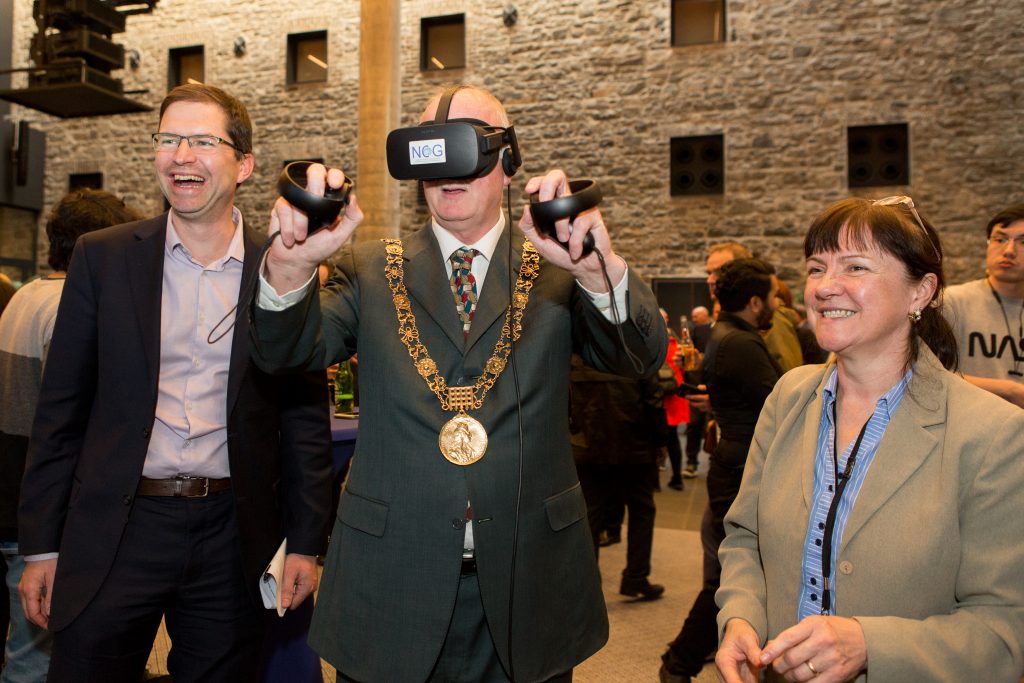3D modelling technology is used to create three-dimensional digital representations of objects or surfaces. This technology is transforming city planning and community engagement. It helps developers and city planners to visualise new opportunities and communicate the impact of existing and proposed developments.
To explore the value of 3D modelling for the city, Dublin City Council procured a 3D Model of the Docklands Strategic Development Zone (SDZ) from D3D in 2018.
Project Activities
Following the procurement of the model, Smart Docklands held a hackathon where it invited the public to ‘hack’ the 3D Docklands model.
The hackathon highlighted the enormous potential of 3D modelling to address a diverse range of city challenges
Participants were challenged to deliver new solutions, applications and services across four areas:
- Transportation, mobility and environment
- Urban planning and digital construction
- City infrastructure and asset use
- Civic engagement and serious gaming

The outputs of the event highlighted the enormous potential of 3D modelling to address a diverse range of city challenges including planning consultation, emergency response and energy modelling.
Impact
The model has already provided great value to the city in the planning process. It supported the initial design phase for the proposed Blood Stoney Bridge. Council planners were able to virtually walk along the bridge and experience what it would be like. This led to changes in the design which should improve the real life experience for citizens of and visitors to Dublin.
The 3D Docklands model has enhanced public communication and engagement.
The model was also used to bring the designs of the proposed White Water Rafting facility to life. The model got over 160,000 views, demonstrating the potential of using 3D modelling to communicate proposals and engage the public.
The Smart Docklands team are now working on a series of strategic workstreams to further explore how 3D modelling can benefit the city:
- Design, compliance and construction – how can 3D modelling help Council planners ensure compliance in planning applications?
- Education, policy and consultation – how can 3D modelling be used to consult with citizens on planning proposals?
- Operations and maintenance – how can Digital Twins, combining 3D modelling with IoT data, help the Council to manage operations?
- Tourism – how can visitors explore the city through augmented reality?
- Exploration – what new and innovative opportunities can 3D modelling provide?